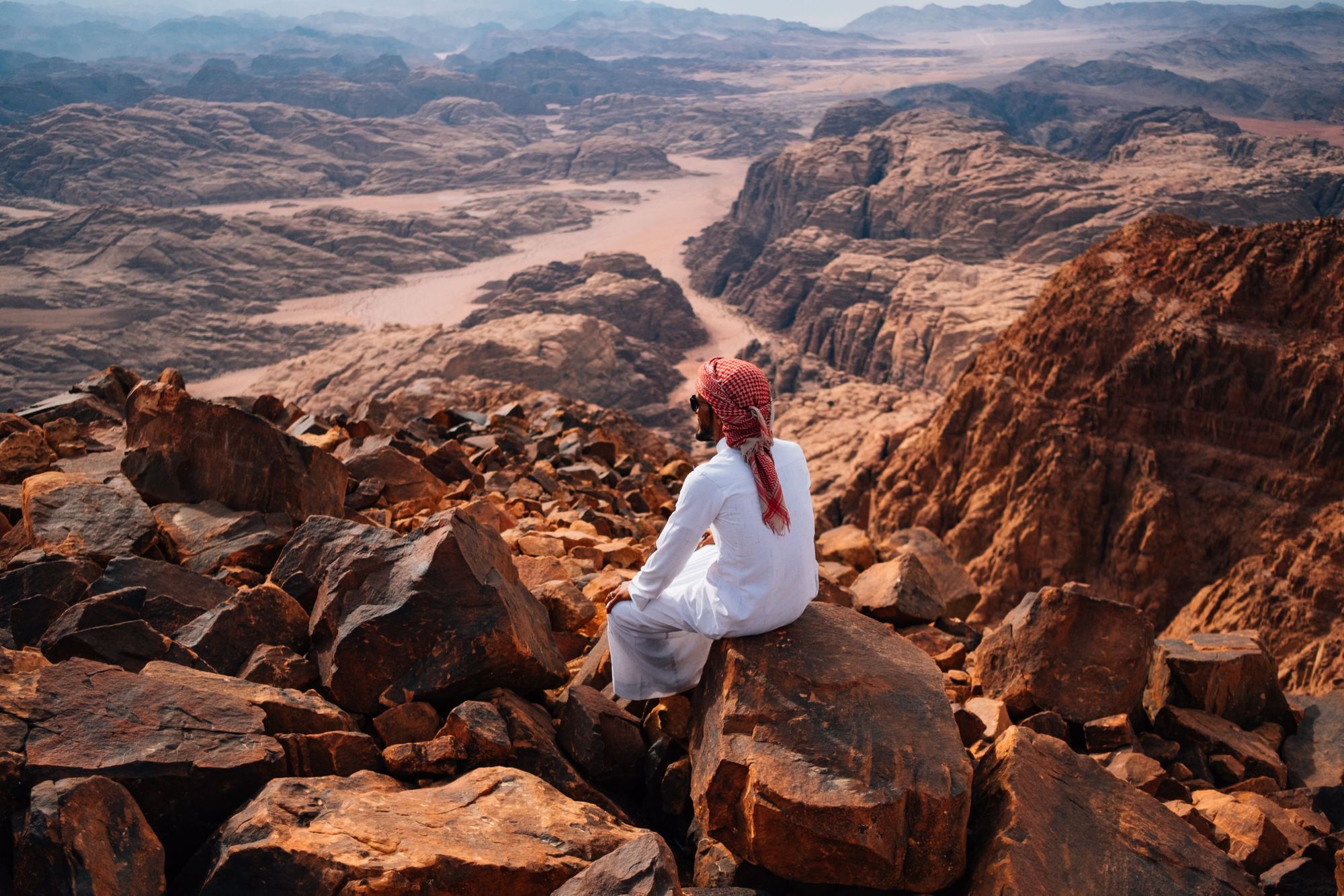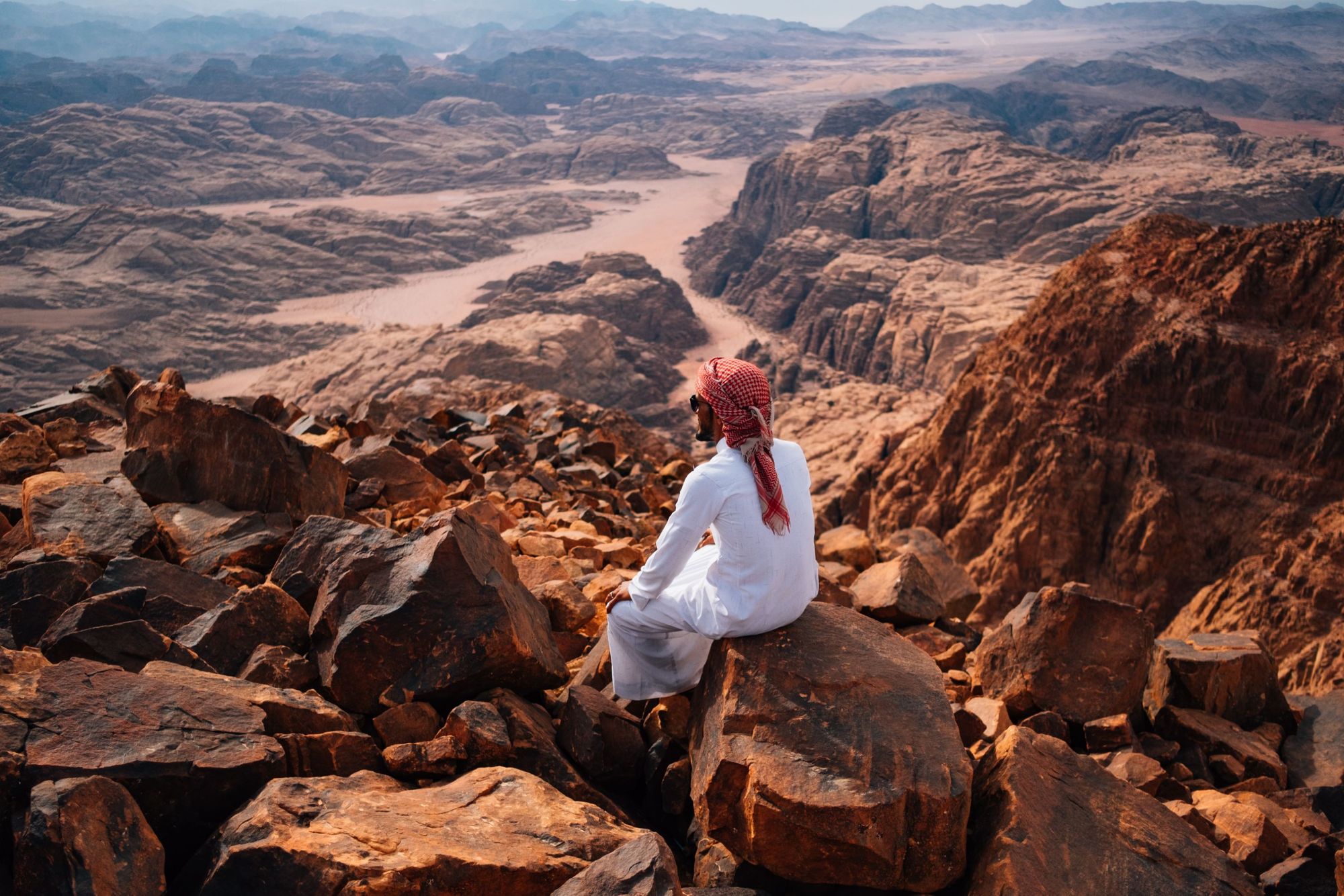
The Jordan Trail is a route which runs 420 miles (675km) from Umm Qais, a town in the north of Jordan, to Aqaba in the south - passing through the capital of Amman, the ancient city of Petra and the desert of Wadi Rum, dotted with sandstone monoliths, before finishing at the Red Sea.
The concept of crossing Jordan on foot dates back millenia. The country was once at the centre of the King’s Highway trade route, which ran from Egypt to Aqaba and then north to Damascus. It was used by Moabites, Edomites and Ammonites. Jordan became the centre of the Nabatean empire - and Petra grew into a vibrant town; the opulent crown jewel of this enormous trade route.
Some people who live just an hour away from Petra never get to see the benefit of the travellers who come through the area...
This new route traces some of the old one. Launched in 2015, it is now Jordan’s national trail. A journey through the history and beauty of the country - it shows that while the wonders of Petra are spectacular, there’s a lot more to Jordan too.
“It means a lot to us,” says Ayman Abd Alkareem, one of the founders of the trail, and of the company Adventure Jordan. The trail takes 40 days to walk in full and passes 75 villages.

“The trail goes through Petra, but it also distributes income throughout the country,” says Ayman, “especially to communities that don't get enough share of the tourism. Travellers buy bread from bakeries, go to small grocery shops and remote areas that don’t get their share.
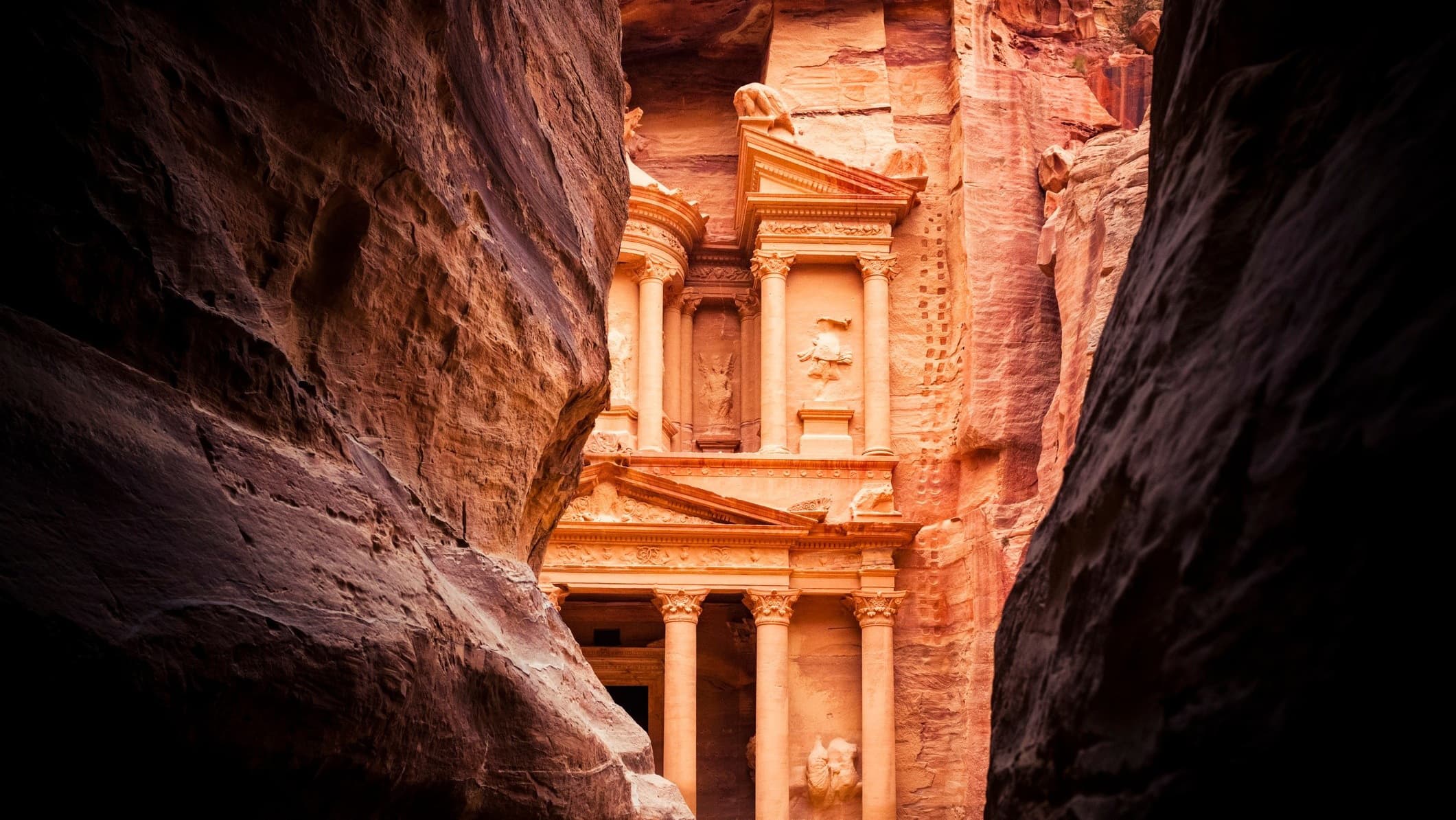
“Some people who live just an hour away from Petra never see the benefits of the travellers who come to the area. They see the tourist buses going back and forth, but they never stop. From my experience as a guide, if communities start seeing travellers coming through their area, or by their area, without interacting with them or without benefiting out of them or without engaging with them - that creates tension. And that's not what anyone wants out of tourism.
"These long-distance trails help a lot with that. Hikers and cyclists, though, take detours and visit any community they pass."
If you come to Jordan without meeting the right people, without digging under the skin of the culture and learning about it, you haven't been to Jordan.
The first section of the trail runs from the border with Israel through oak forests and farmlands. The ‘Jesus Cave’ is near the start point. It’s said that Jesus stayed here before his baptism. The route then runs past the Roman city of Pella, and on stony paths and dry desert to Ajloun.
The route passes the Rmemeen waterfall, and fields of poppies and buttercups which bely the classic view of Jordan as pure desert. You’ll pass the only microbrewery in Jordan, Carakale, as you head south from As-Salt - a UNESCO-protected city built on three tightly-packed hills in the Balqa highlands. In the cities and towns, locals in traditional ghutra headdress play backgammon and the scent of herbs rises through the streets, while outside the villages, Bedouin camps will welcome you warmly - topping up your water or inviting you in for tea.
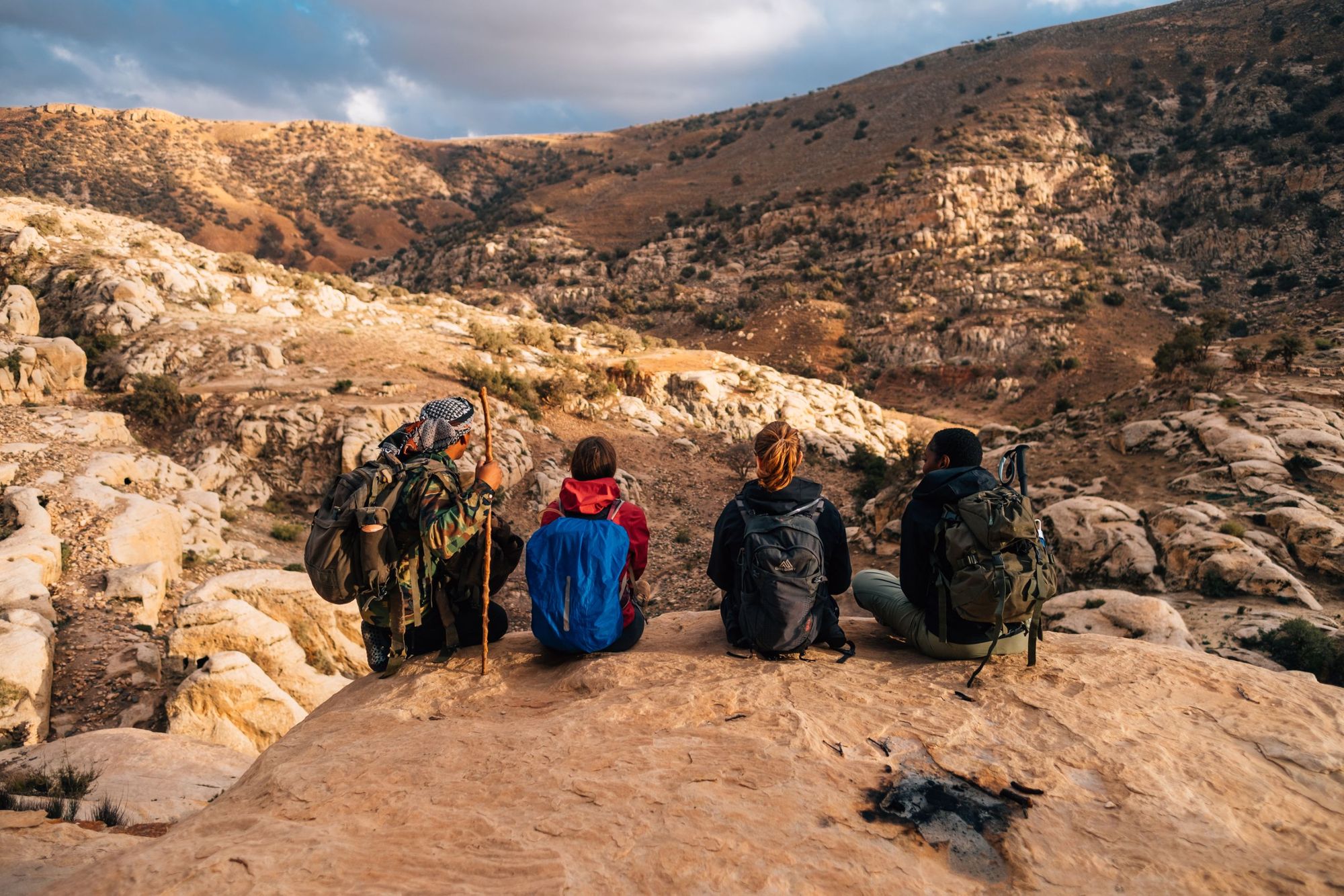
“The Bedouins are very hospitable people - very, very generous,” says Ayman. “They mainly live in the south, where it’s more deserted. They’re nomadic because they need to keep moving to herd their animals, to find grass and food. They’re very nice people, and Jordan in general is really about its people.
"If you come to Jordan without meeting the right people, without digging under the skin of the culture and learning about it, you haven't been to Jordan. Petra with people makes Petra what it is. Good guides are able to not just guide you on the trail or translate for you, but facilitate these kinds of engagements.”
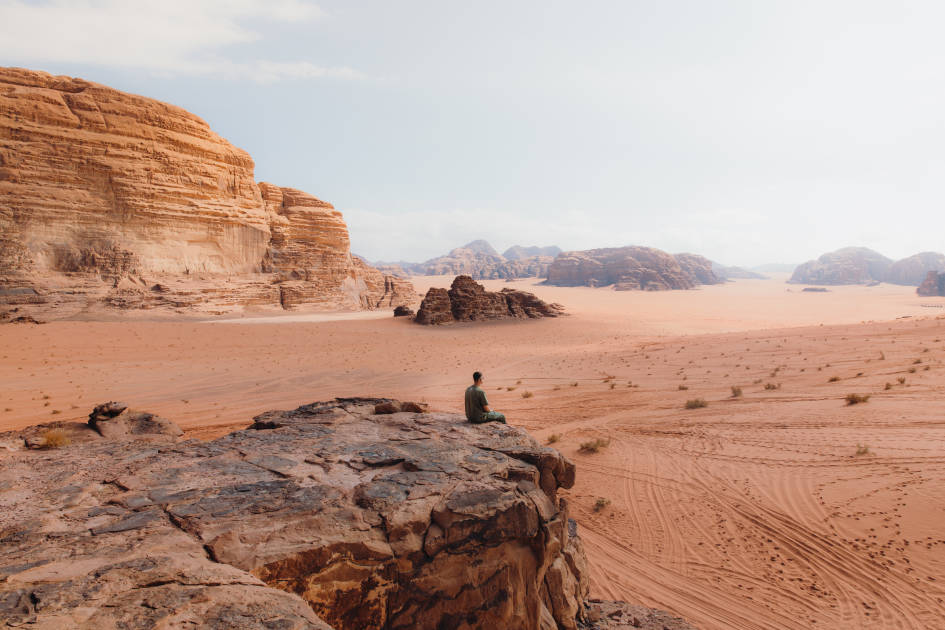
As the cities fade to deserts, where goats roam and cacti spike out the ground, the mere concept of light pollution seems an impossibility. The stars shine as brightly here as anywhere.
You’ll walk through Wadi Mujib, often called Jordan’s Grand Canyon, and see the stream running through its 800m high walls. As you continue south, olive groves come into view, and limestone cliffs will accompany you to Dana.
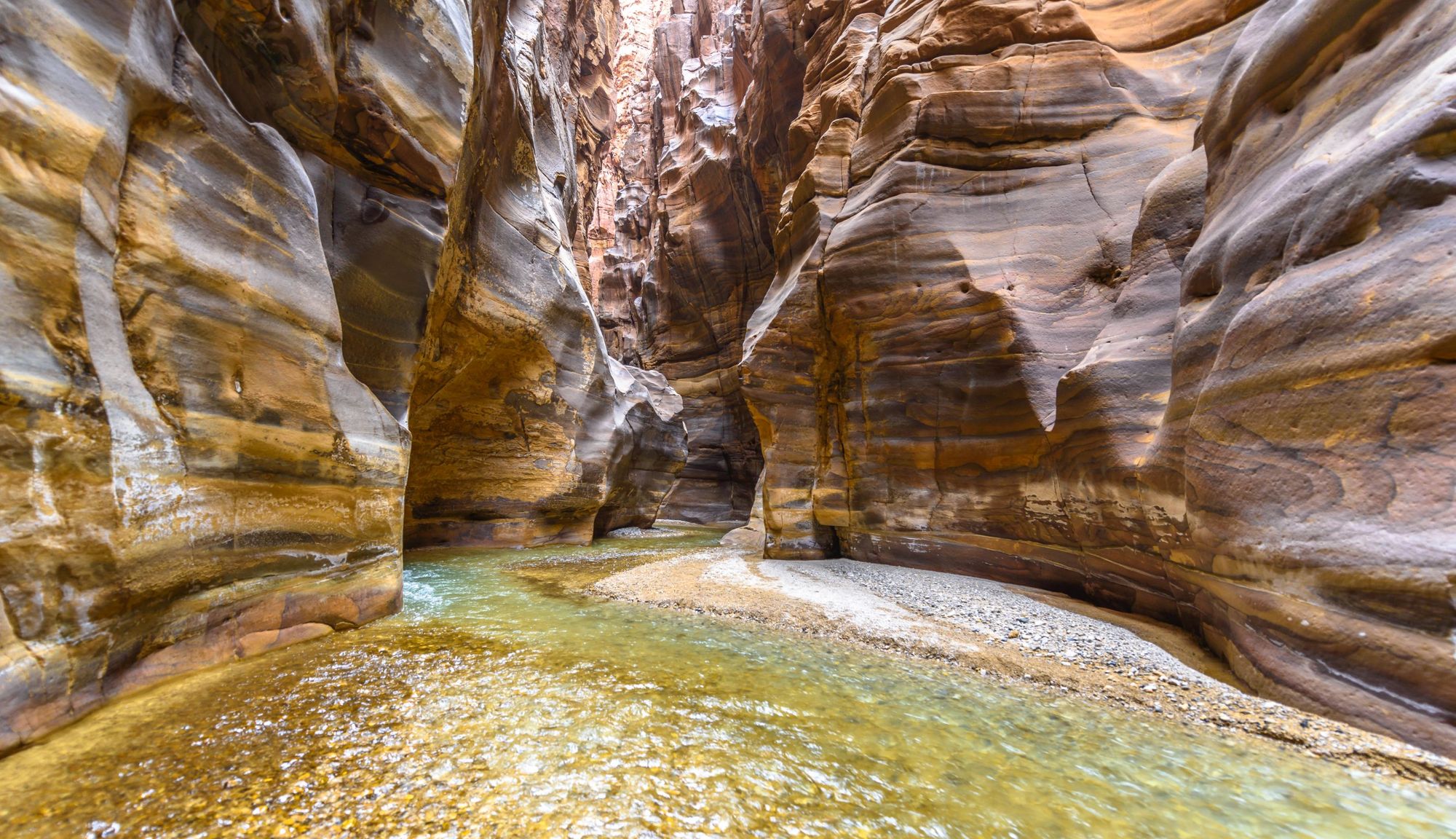
“The south of Jordan is what makes Jordan such a great adventure destination,” says Ayman. “That’s where we have the desert rock formations, the Great Rift Valley overlooking the Sharah Mountains, and so many viewpoints - over Dana, Petra and Wadi Rum.”
From the north, you walk into Petra via Dana, Jordan’s largest nature reserve. The landscape is made up of everything from fertile farmlands to low-lying desert, limestone and granite rock faces and remarkable sandstone cliffs. Get lucky and you might spot a Nubian ibex, caracal or a Syrian wolf.
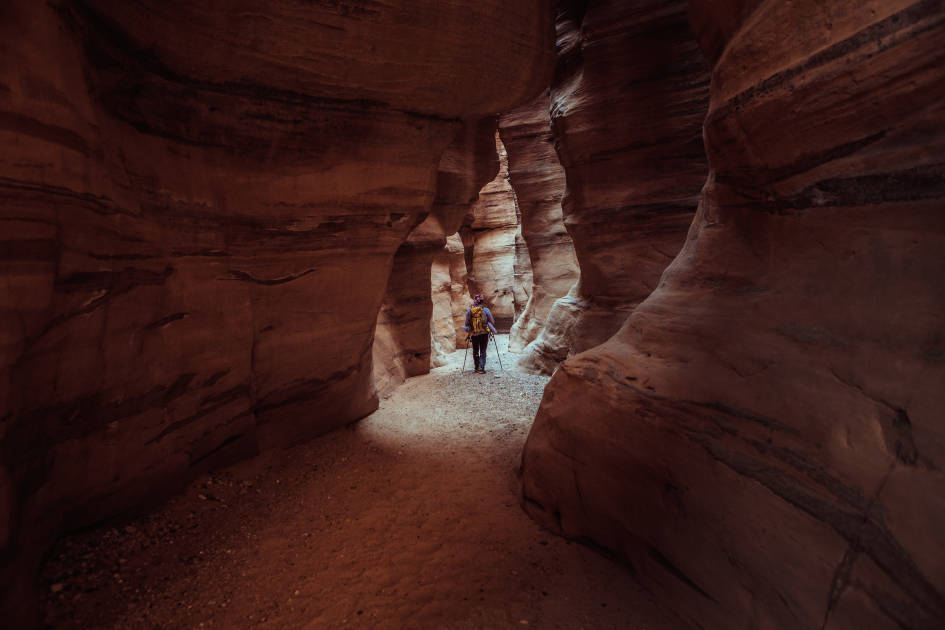
Leaving Petra, you continue south to Wadi Rum, an otherworldly landscape, famed for the huge red rocks which rise out of the sand. Ridley Scott chose the desert as a stand-in for Mars when he was filming 2015 film The Martian, starring Matt Damon. And hidden amongst the landscape are tens of thousands of petroglyphs and rock carvings that make Wadi Rum an open-air library.
When the sun sets over the wiggling lines of those monoliths, which layers into the horizon, the reds and oranges amplify. And as the sky goes dark, millions of stars blink into life.
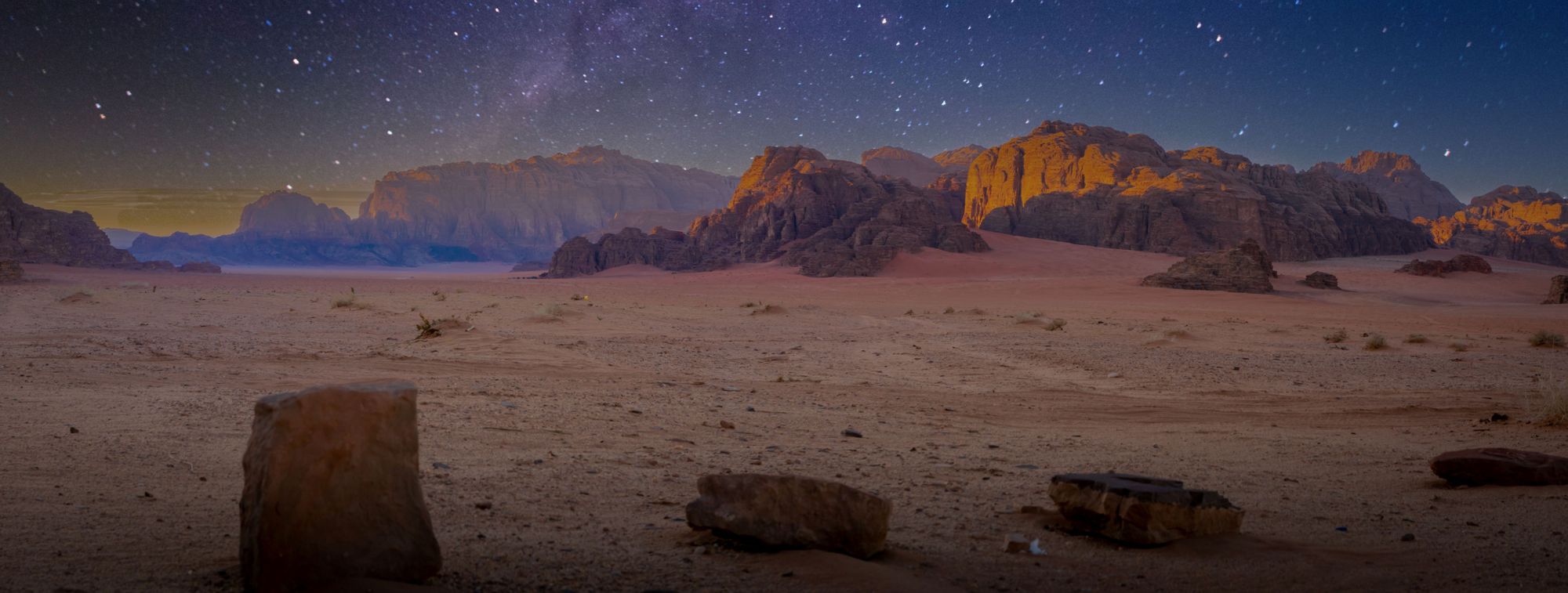
You’ll reach the Red Sea only after passing the rock formations and cliffs of Jabal Kharazah and Jebel Khazaki, before finishing the trek at the Red Sea, the body of water which separates Asia from Africa.
Such has been the success of the Jordan Trail - heralded by the likes of National Geographic and Lonely Planet - that the Jordan Bike Trail is now being launched too. It follows a similar route to the walking path, but it’s not a carbon copy.
That’s where we have the desert rock formations, the Great Rift Valley overlooking the Sharah Mountains...
“It’s about 450 miles (730km), and takes between 12-15 days,” says Ayman. “It was designed so it’s 50% paved roads and 50% off-road, and it can all be done by a 4x4 car, so tour operators can offer supported cycling trips on the trail.”
Heading north, there are steep uphills and downhills. Over 19 miles (30km) you could gain over a thousand metres of elevation, whereas in the south, heading to Aqaba, the trail is flatter and more accessible to the everyday cyclist.
Both trails are becoming key drivers as Jordan enters a new era of tourism.
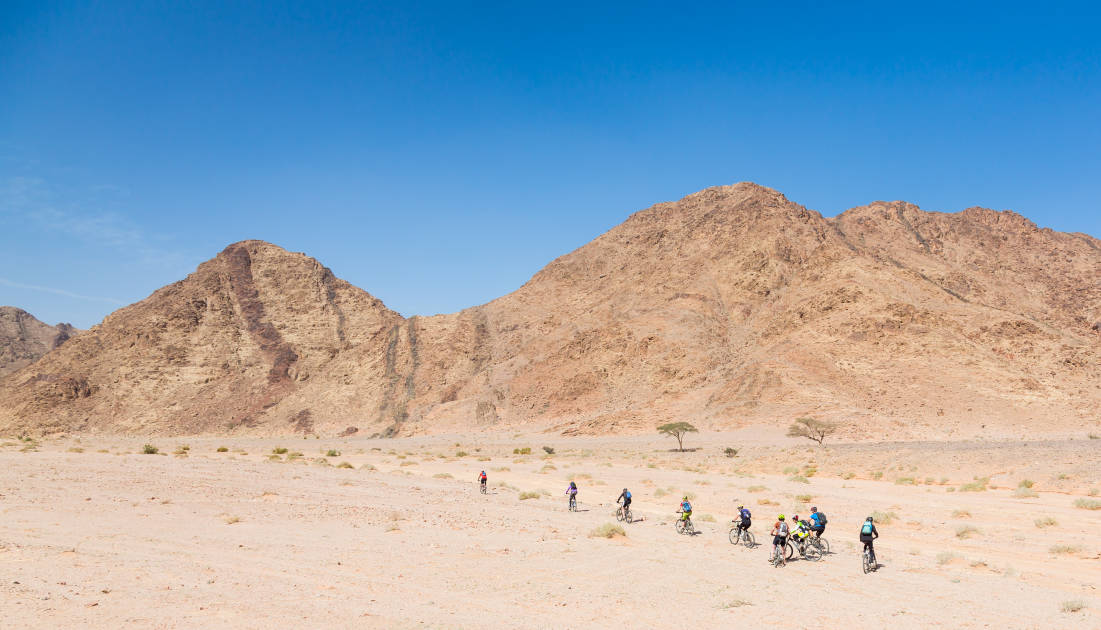
“The country has been promoted as a seasonal location over the past 10 years,” says Ayman. “If you search for the best months to visit, you’ll see March, April, October and November, but it’s not always the case, and it shouldn’t be. At the moment we have a spike of tourism in these months, and then it’s very quiet for the rest of the year - but you can visit for adventure in the low season. Even if it’s hot, you can start in the morning and then take long breaks. These trails help to stretch the season - and with climate change, it’s harder to predict the weather.
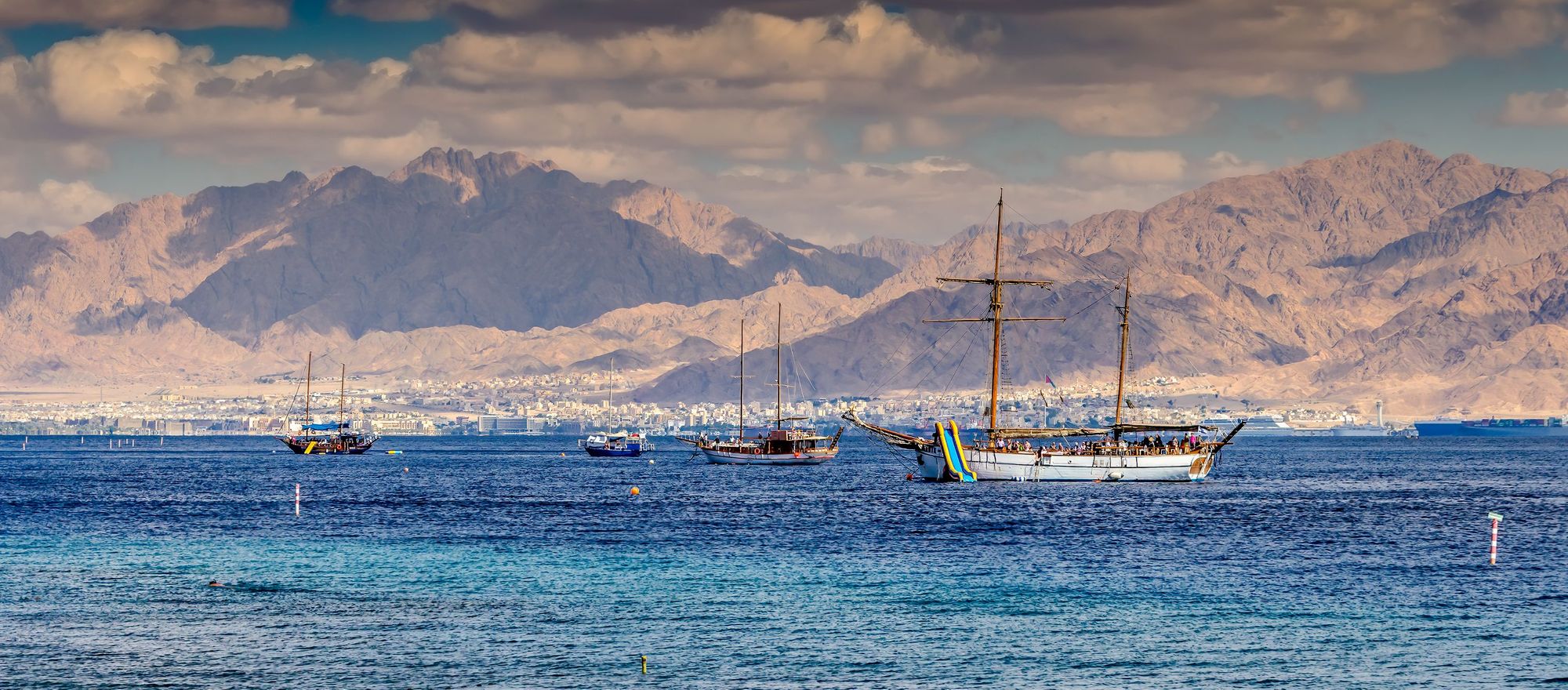
“The tourism board have been promoting Jordan as a standalone destination first off, because before, it was promoted as part of a larger package including a visit to Jordan, Egypt, Israel, Palestine, Lebanon. And it’s working. Many people are extending their trip duration in Jordan and people are spending seven to 15 days in Jordan now - rather than just passing through.

“Before, people only knew Jordan as Petra. We had a situation where people would even arrive at the border not knowing they were crossing to another country - thinking they were just going to Petra and back. Now, people are extending their stays in Jordan. It’s a small thing, but it's an important one too.”
Even Petra, you can experience in so many different ways than most do.
None of this is to diminish the beauty of Petra - one of the wonders of the world.
“It’s an amazing site to visit,” says Ayman. “It’s impressive, but there is a lot more to Jordan too - and even Petra, you can experience in so many different ways than most do. We were recently out exploring new trails around Petra. We’ve been a thousand times but we’re still looking for and finding new trails. You could spend seven days inside Petra alone - but most don’t know that. There are so many sites in Jordan to explore - and the trail is an excellent way to do that.”
Read more:
- Discovering Ecuador's 22-Mile Quilotoa Loop: A Guide
- The New 266km Bikepacking Route Through the Cairngorms
- The 200km Bikepacking Route Through Snowdonia
- The Huge New Cycling Adventure on the Yorkshire coast
Inspired? Explore our adventure holidays now on the Jordan Trail!

